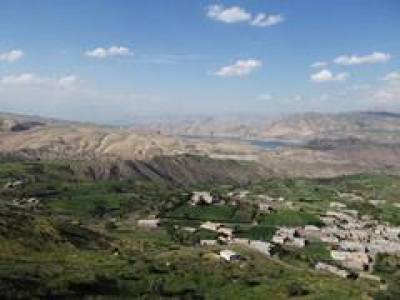This module emphasises the comparative study of archaeological, written, environmental, and art historical sources from Egypt, the Near East, and neighbouring regions.

Our attachment to Egypt and the ancient Near East as the 'birthplace of civilization', where the foundations of modern societies were laid, remains as strong today as it has ever been. Yet our current picture of how prehistoric and ancient societies actually developed in those regions could not possibly have been predicted by earlier generations of scholars.
Processes leading to the origins of farming, cities, states, literacy, and empires - all of which developed first in these regions - are currently being rethought in the light of new archaeological data. And our understanding of early relationships between the societies of Middle East, North East Africa, South and Central Asia, and the Mediterranean are being transformed by new evidence for patterns of cultural interaction that cut across traditional frontiers of research. The emerging synthesis constitutes a radical challenge to conventional theories of social and cultural evolution, which this module sets out to explore.
Students enrolling for this module, whether as a core or option, will develop advanced perspectives on current debates in the archaeology of these areas. They will encounter evidence from across a large part of Western Asia and North East Africa, spanning Egypt, Sudan, Mesopotamia, Iran, Anatolia, Arabia & the Gulf, and the Eastern Mediterranean seaboard, as well as parts of Central and South Asia.
Each taught session uses applied case studies to address general issues of archaeological interpretation, with an emphasis on 1) new theoretical perspectives, 2) the understanding of long-term social change through comparative study of neighbouring civilisations, 3) the interpretation of interregional processes operating at a large scale. Case studies will range chronologically from the end of the last Ice Age (c. 10,000 BC) through the Neolithic and Bronze Ages to the Iron Age (c. 500 BC).
Topics to be covered include:
- Egypt and the ancient Near East in world history
- Holocene environments, climate change, and human impact
- Neolithic transformations: worlds of the earliest farmers
- Global villages: the later prehistory of Egypt and the Middle East
- Origins of cities and states: a comparative perspective
- Emergence, functions, and development of writing systems
- Commerce, cosmology, and sacrifice: the movement of goods
- Ancient empires and imperialism: current themes and perspectives
- Between archaeology and art history: the transmission of images
- Body, gender, and power: changing constructs in Egypt and the ancient Near East
Aims of the module
- To provide students with an advanced understanding of patterns and processes in the archaeology of the Egypt and the Near East
- To situate those processes within a broader comparative understanding of World Archaeology
- To familiarise students with new evidence for interconnections and cultural exchanges between the early Middle East and other parts of Asia, Africa, and Europe
- To familiarise students with the scientific methods now used to reconstruct processes of technological, economic, and environmental change
To explore the implications of Egypt and the Near East for the writing of global history, including its relevance to contemporary social theory and cultural heritage studies
Learning Outcomes:
- To prepare students to undertake original research in world archaeology with an informed perspective on the archaeology of Egypt and/or the Near East
- To enhance students' ability in reading and debate through assessment and evaluation of alternative interpretations, and presentation of reasoned conclusions
- Recognition of the linkages between data, methods and ideas
- Application of the methods and theories of inter-disciplinary analysis
- Skill in integrating a variety of evidence from different disciplines into overall interpretations
- Proficiency in the setting out information and ideas clearly in written form
- Preparation for designing and operationalising research topics in this field, including the development of meaningful links between different scales of analysis (from the microscopic to studies of artefacts, landscapes, distribution patterns, and remote sensing from space)
Teaching Methods
The module is taught through a two-hour weekly seminar. Content ranges from general thematic overviews to detailed presentations of specialist research, and will include extensive visual illustration of key data. All seminars have weekly readings, which provide a focus for students to contribute actively to the discussion. Students will also be given more structured opportunities to present their views both visually and orally in class.
Module information
- Code: ARCL0157
- Credits: 15
- Coordinator: David Wengrow
- Prerequisite:
- Handbook: open»
For registered students
Availability
- Running in 2022-23
 Close
Close

